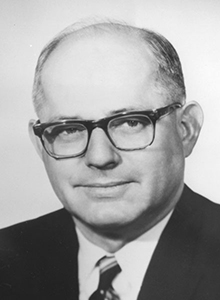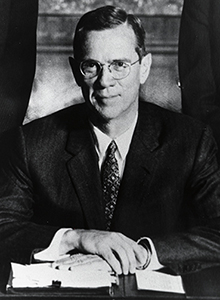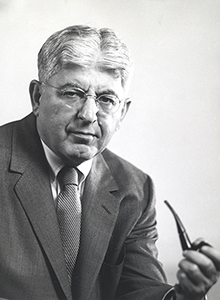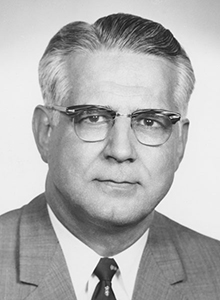
Darryl R. Francis
- President, Federal Reserve Bank of St. Louis, 1966–1976
- Born: August 24, 1912
- Died: February 8, 2002
Darryl R. Francis became the seventh president of the Federal Reserve Bank of St. Louis on January 17, 1966, succeeding Harry A. Shuford. He retired February 29, 1976.
A native of Ridgeway, Missouri, Francis was born in 1912. He attended the University of Missouri and received a bachelor’s degree in agriculture in 1936. After graduation, he taught agriculture at the university for several years. In 1975, he received the university’s Distinguished Alumni award.
Francis began his career in banking and economics at the St. Louis Fed in 1944 as an agricultural economist, a position he held for five years. From 1949 until 1953, he was employed as a commercial banker in Memphis. He later served as a vice president at Boatmen’s National Bank in St. Louis.
In 1953, Francis rejoined the St. Louis Fed as a vice president, later serving as branch manager at the Memphis branch for five years. In 1959, he was named first vice president of the Reserve Bank in 1959 and president in 1966.Francis’ major contribution to the field of economics was his strong advocacy of monetarist theory and declarations against the effects of inflation. During his career, he was one of the Fed’s sharpest critics and was often at odds with the Fed’s stance on monetary policy. He also spoke openly at Federal Open Market Committee meetings and frequently dissented from the majority view.
Because of Francis’ leadership, the St. Louis Fed earned a reputation as a “maverick” within the System. In November 1967, the year after Francis became president of the St. Louis Fed, Business Week noted that “the Federal Reserve Bank of St. Louis has become a maverick, questioning both the current monetary policy of the System, and the basic premises on which that policy is based.” The article continued: “as early as last May, Darryl R. Francis…parted company with his fellows on the Fed’s policy-setting Open Market Committee and urged a turn to tight money—a step the committee has yet to take.”
Francis expanded the Research Department’s work on monetary economic policy and ensured all the research was readily available to the public. According to economist Murray Weidenbaum, during Francis’s tenure at the Bank, the St. Louis Fed’s publications were seen as “the best material available on the nation’s money supply.” 1
When testifying before congressional committees, Weidenbaum frequently used these publications, as did many of his contemporaries.Before his retirement, Francis also was a member of the board of directors of Deaconess Hospital and the board of trustees for Washington University in St. Louis. He also served as chairman of Merchants Bank in Fort Smith, Arkansas.
Francis died in 2002 at the age of eighty-nine.
Written by the Federal Reserve Bank of St. Louis. See disclaimer.





